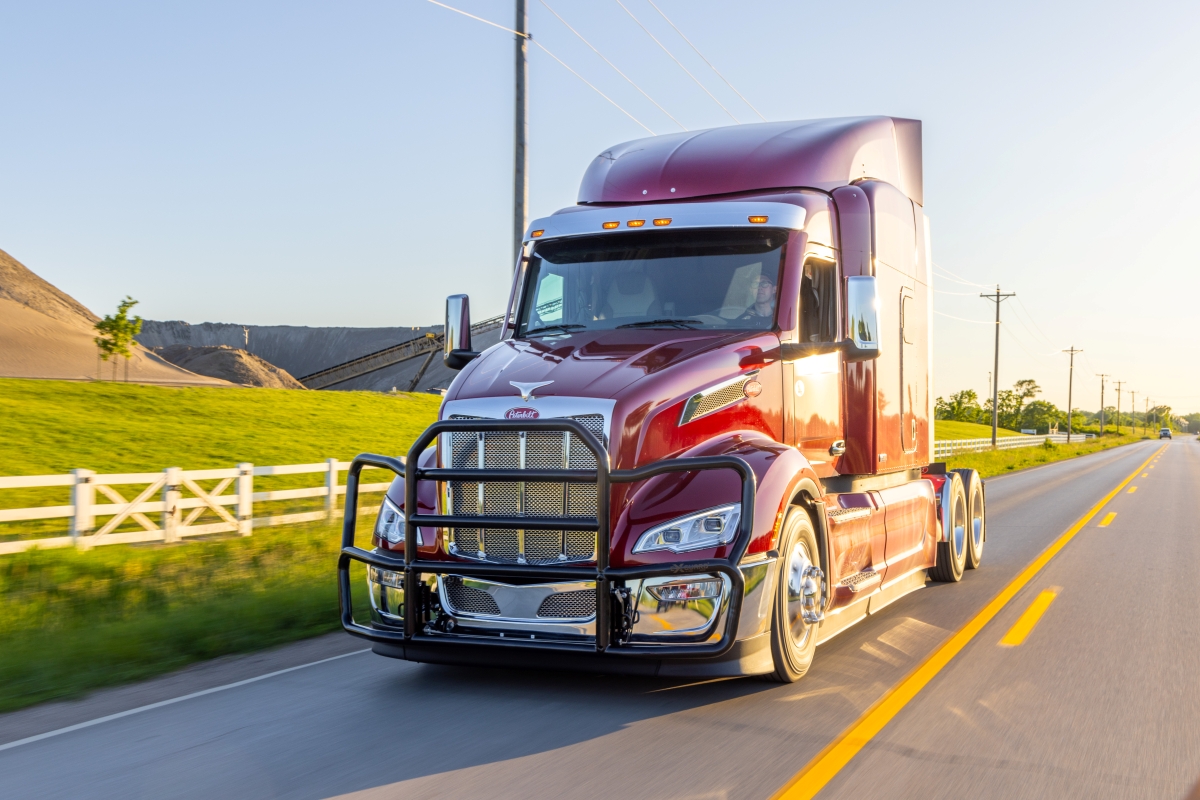As wildlife collisions pose a significant risk to commercial truckers, there is an increasing focus on effective front-end protection strategies to safeguard vehicles and drivers from costly damages.
Impact of Wildlife Collisions on Trucking
The increasing frequency of wildlife-related incidents has triggered a shift among trucking fleets towards more robust front-end protection systems. These measures not only aim to minimize the financial burden of repairs but also prioritize drivers’ safety on the road. The financial implications are staggering; estimates suggest that even a minor collision with a deer may incur costs ranging between $15,000 and $20,000, while larger animals like moose or bears could lead to total vehicle loss.
According to industry experts, the demand for additional vehicle protection is rising as trucking companies seek to shield themselves from spiraling repair costs and prolonged downtime due to accidents. The downtime related to wildlife collisions can be financially debilitating, costing carriers tens of thousands of dollars due to lost revenue.
Costs of Downtime
On average, depending on the availability of parts, downtime can range from a few days to several weeks or even a month for specific parts like customized hoods. With estimates placing the average lost revenue at around $1,200 per day, it becomes evident that carriers can face financial losses upwards of $30,000 if their vehicles are offline for extended periods.
Shifting to Full Protection Solutions
Many fleets are making the strategic decision to enhance their vehicle protection, transitioning from partial to full coverage. Lower guards typically shield the bumper and collision mitigation systems, while full guards extend protection to hoods, headlightsve grilles. This evolution is a direct response to the increasing costs associated with wildlife collisions, which highlight the essential role of comprehensive protection.
Rising Risks of Wildlife Collisions
Data from the Insurance Corporation of British Columbia (ICBC) underscores the prevalence of animal-related crashes, with a reported 12,825 incidents in 2023—the highest number since 2019. Alarmingly, over 1,070 crashes resulted in injuries, and two even led to fatalities. The Southern Interior region alone averages over 5,000 collisions annually between 2019 and 2023, demonstrating a pressing need for effective protective measures.
The risk of such collisions peaks during spring and summer. Increased animal activity, driven by feeding and mating cycles, raises the likelihood that animals will venture closer to roadways. Crashes generally occur during dawn and dusk, when visibility is compromised, producing a perfect storm for unfortunate encounters between drivers and wildlife.
Safety Benefits of Grille Guards
Beyond preventing damage to the vehicle, grille guards significantly enhance driver safety. They minimize the likelihood of situations where a driver may need to exit their vehicle following a collision, thus reducing exposure to potential traffic hazards or adverse weather conditions. In particular, collisions with moose can have severe consequences, as their sheer size can lead to serious injuries if they penetrate the vehicle’s cab.
In addition, grille guards help avert escalation into more dangerous situations, such as jackknife or rollover incidents, which are among the most perilous types of crashes on the road. It is noteworthy that the effectiveness of these guards relies on their compatibility with the advanced driver assistance systems (ADAS) integrated into modern trucks.
Compatibility and Fleet Considerations
Guard compatibility is vital; fleets are encouraged to consult with their product providers about the compatibility of the guards with specific vehicle makes and models. This is crucial to ensure that the guards do not interfere with the vehicle’s safety systems. Furthermore, varying fleet operations influence guard choices. Bulk and liquid haulers might opt for smaller guards to retain payload capacity, favoring exposure of headlights for increased product volume. In contrast, long-haul and logging operations typically invest in comprehensive protection due to their operational conditions.
Awareness and Prevention Remain Key
While protective measures are essential, drivers must remain vigilant. Wildlife does not adhere to traffic regulations, making awareness a critical component of preventing collisions. Adjusting driving habits, maintaining alertness, and utilizing proper lighting can significantly mitigate risks. Planning routes that avoid known wildlife corridors during peak activity times further enhances safety.
| Risk Factors for Wildlife Collisions | Mitigation Strategies |
|---|---|
| Increased animal activity in spring and summer | Adjust driving times to avoid dawn and dusk |
| Rapid visibility loss due to glare | Use proper lighting and slow down in high-risk areas |
| Common collision hotspots | Consult wildlife data and adjust routes accordingly |
As the trucking industry faces these mounting challenges, GetTransport.com stands out by providing versatile solutions that facilitate both office and home moves, cargo deliveries, and the transport of bulky items like furniture and vehicles. This platform offers affordable and reliable options tailored to meet diverse transportation needs across the globe, aligning seamlessly with the evolving logistics landscape.
In summary, wildlife-related collisions emphasize the necessity for enhanced front-end protection systems to safeguard trucking fleets. As the frequency of such incidents increases, the associated financial fallout highlights the importance of both protective measures and attentive driving habits. Ultimately, while reviews and feedback can be insightful, nothing compares to personal experience. By utilizing GetTransport.com, individuals and businesses can efficiently arrange their cargo transportation needs at the best global prices. This empowers customers to make informed decisions without unnecessary costs, ensuring a smooth and hassle-free logistic experience. Start planning your next delivery and secure your cargo with GetTransport.com.

 Strategies for Mitigating Wildlife-Related Damage in Trucking Fleets">
Strategies for Mitigating Wildlife-Related Damage in Trucking Fleets">